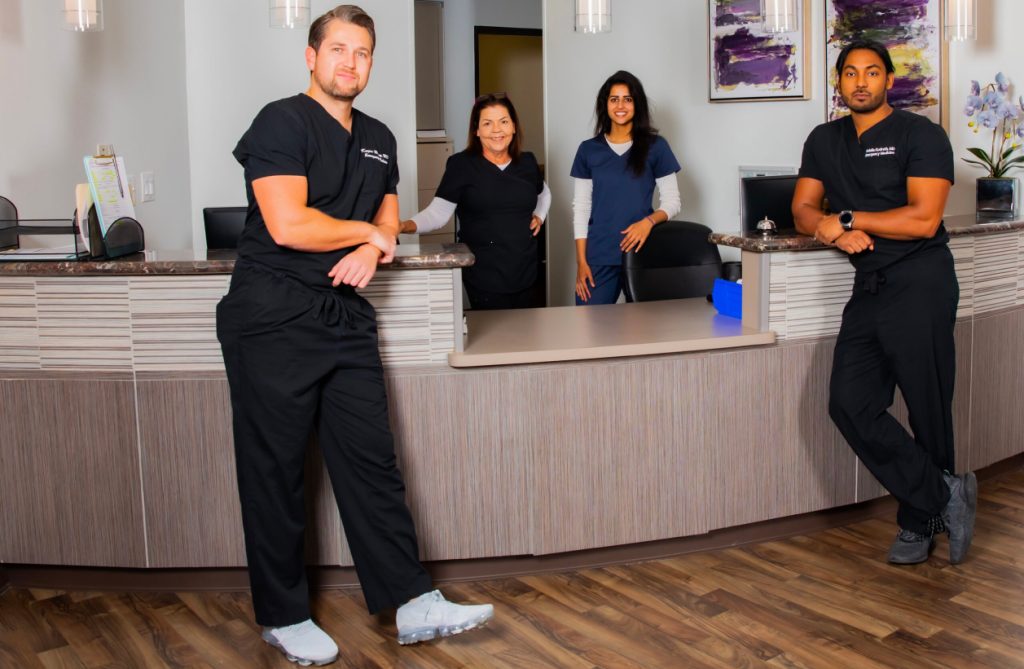Emergency Room Myth Busters: Debunking the Myths About Freestanding Emergency Rooms
In the realm of healthcare, myths often obscure the reality, and freestanding emergency rooms (FSERs) are no exception. These specialized facilities play a vital role in delivering timely and expert care, yet they’ve become entangled in misconceptions that could deter individuals from seeking the swift medical attention they urgently need.
Emergency Room Myth Busters is a journey through the maze of misinformation that surrounds FSERs. Our mission is simple: to debunk the common myths and offer accurate insights. By the end, you’ll possess the knowledge to make well-informed decisions about when and why to choose these facilities for top-tier care.
Join us as we unveil the truth about freestanding emergency rooms, spotlighting their strategic benefits and the expertise of their medical teams. We’re here to empower you with the facts, ensuring you’re equipped to prioritize your health with confidence.
At Supreme Care ER the finest emergency room in Cypress Texas near Jersey Village, we’re happy to provide you with the emergency care that you need in the event of a medical emergency.
1. Myth: Freestanding ERs are the same as urgent care centers.
Fact:
Freestanding ERs and urgent care centers serve different purposes. Freestanding ERs are equipped to handle more serious and life-threatening medical conditions, similar to traditional hospital-based emergency rooms. They have the capability to provide a wide range of services, including advanced imaging, lab testing, and specialist consultations. Urgent care centers are suitable for non-life-threatening illnesses and injuries that require immediate attention but are not as severe as those requiring emergency care.
2. Myth: Freestanding ERs are only for extreme emergencies.
Fact:
Freestanding ERs are equipped to handle a wide range of medical conditions, from minor injuries to severe illnesses. If you’re experiencing symptoms that could be life-threatening or require prompt medical attention, such as chest pain, difficulty breathing, severe injuries, or sudden severe headaches, it’s appropriate to visit a freestanding ER. They offer the advantage of shorter wait times compared to traditional hospital-based emergency rooms.
3. Myth: Freestanding ERs are more expensive than traditional hospitals.
Fact:
While the cost of care at a freestanding ER can be higher than at an urgent care center, the pricing is often comparable to that of a hospital-based emergency room. It’s important to note that the cost of care is influenced by factors such as the severity of your condition, the services provided, and your insurance coverage. Many freestanding ERs accept insurance and offer transparent pricing to help patients understand the costs upfront.
4. Myth: Freestanding ERs have longer wait times than traditional hospitals.
Fact:
Freestanding ERs often have shorter wait times compared to hospital-based emergency rooms. This is because they are specifically designed to handle urgent cases without the extensive bureaucracy and complexity of a large hospital setting. However, wait times can still vary depending on the volume of patients at any given time.
5. Myth: Freestanding ERs are only located in urban areas.
Fact:
Freestanding ERs can be found in various settings, including suburban and rural areas. They are strategically located to provide access to emergency medical care for a broader population. These facilities are often situated in areas where traditional hospital-based emergency rooms might be farther away, ensuring that people have access to timely medical attention.
6. Myth: Freestanding ERs are not staffed by qualified medical professionals.
Fact:
Freestanding ERs are staffed by board-certified physicians, registered nurses, and other medical professionals who are trained to provide emergency medical care. They are equipped to handle a wide range of medical conditions and have the necessary expertise to diagnose and treat patients in urgent situations.
7. Myth: Freestanding ERs are only for adults.
Fact:
Freestanding ERs provide care for patients of all ages, including pediatric patients. They are equipped to handle medical emergencies for children and can provide specialized care tailored to their needs.
8. Myth: You need an appointment to visit a freestanding ER.
Fact:
Freestanding ERs operate on a walk-in basis, meaning you don’t need an appointment to receive medical care. They are designed to provide immediate attention to patients with urgent medical needs, regardless of the time of day.
9. Myth: Freestanding ERs are not equipped to handle specialized medical equipment.
Fact:
Freestanding ERs are equipped with advanced medical equipment, including X-ray machines, CT scanners, ultrasound machines, and laboratory facilities. This allows them to perform diagnostic tests and evaluations like those in traditional hospital-based emergency rooms.
10. Myth: Freestanding ERs are not regulated or accredited.
Fact:
Freestanding ERs are subject to regulatory standards and accreditation processes, similar to hospital-based emergency rooms. They are required to meet specific guidelines to ensure patient safety and quality of care.
11. Myth: Freestanding ERs are only open during regular business hours.
Fact:
Freestanding ERs are typically open 24/7, including weekends and holidays. This ensures that patients have access to emergency medical care at any time, day or night.
12. Myth: Freestanding ERs are not connected to local hospitals or medical networks.
Fact:
Many freestanding ERs have affiliations or partnerships with local hospitals and medical networks. This allows for seamless transfer of patients who require specialized care or hospitalization beyond the scope of the freestanding ER’s services.
13. Myth: Freestanding ERs are only for trauma cases.
Fact:
Freestanding ERs are equipped to handle a wide range of medical conditions, including trauma cases, heart attacks, strokes, respiratory distress, severe infections, and more. They provide comprehensive emergency care beyond just trauma cases.
14. Myth: Freestanding ERs are a substitute for primary care physicians.
Fact:
Freestanding ERs are designed to provide immediate and urgent medical care, but they are not a substitute for primary care. It’s important to establish a relationship with a primary care physician for ongoing healthcare needs, preventive care, and management of chronic conditions.
15. Myth: Freestanding ERs are all the same in terms of services and quality of care.
Fact:
While freestanding ERs share similarities, there can be variations in the range of services offered and the quality of care provided. It’s important to research and choose a reputable freestanding ER facility that meets your needs and is staffed by qualified medical professionals.
In summary, Free-standing ERs play a crucial role in providing high-quality emergency medical care for a range of serious conditions. It’s important to understand the differences between freestanding ERs, urgent care centers, and primary care providers to make informed decisions about where to seek medical attention based on the severity of your symptoms. Always call 911 or go to the nearest emergency facility if you believe you are experiencing a medical emergency.
At Supreme Care ER in Houston, the finest emergency room in Cypress, Texas, we’re happy to provide you with the emergency care you need in the event of a medical emergency. We are conveniently located at 9530 Jones Road, Houston, Texas, 77065. We’re fast and remain open 24 hours year-round.

Where to go in Case of an Emergency?
At Supreme Care ER, our doors remain open to provide the very best ER care for you and your family. We’re located at 9530 Jones Road, Houston, Texas 77065.










